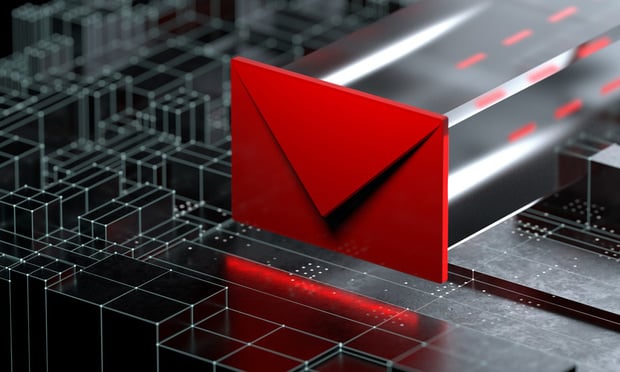The revered geek master and samurai Dr. Gigabyte understands we all can't know everything about everything, especially now that election campaigning is over. The good doctor is willing to help insurance IT executives by answering some tough technology questions–at least until a better gig comes along.
Dear Dr. G.: I was eavesdropping on a conversation among my network engineers the other day. One of them was saying the problem with implementing high-speed network solutions, such as Gigabit Ethernet, was not the speed of the transmission but the size of the bits. Aren't all bits just the same, that is, little pulses of energy, or does size matter?
–Bit Challenged in Boston
Dear BC: You are indeed a bit challenged, but I suspect your issues are not with bits and networking but with a lack of knowledge of elementary physics or quantum mechanics. Don't take offense. This is fairly common among your type. If there is time, we also will go into the proper form of eavesdropping. The crystal goblet on my shelf has come in handy numerous times.
First, a little background. Ethernet is the most commonly used network protocol. The standard data transmission rate for Ethernet is 10 Mbps. That translates to 10 million bits per second. Gigabit Ethernet transmits at a data rate of one billion bits per second–or 1,073,741,824 bits, if you want to be pedantic. So, Gigabit Ethernet is faster than original-recipe Ethernet? Right, but it all depends on what you mean by faster.
Do you want fast, or do you want lots of data? Let's go back to the sixth grade. Your science teacher taught you electric fields travel at the speed of light. (The speed of light in a vacuum is exactly 299,792,458 meters per second.) That is why the light bulb goes on instantaneously when you flip the switch. For the moment we will assume the actual speed of transmission of a bit of data is about 3 x 108 meters per second. An old-school Ethernet NIC card can transmit 1 x 107 bits per second. Do the math. That means each bit will have a length of about 30 meters. Now, this is very interesting. A single bit on a 10 Mbps Ethernet network uses about 100 feet of network cable. That means on a small network, a single bit could be bigger than the entire network. And that is where we start running into the problems your network engineers were discussing.
Ethernet uses a network access method called CSMA/CD (Carrier Sense Multiple Access/Collision Detection). Each computer checks the network cable before sending anything onto the network. If the network is clear, the computer will transmit. If the network already has a signal, then the computer will wait and try again. If two computers transmit at the same time and a collision occurs, each computer backs off, waits a random amount of time, and retransmits. If the signal takes up the entire network, then the possibility of collisions or interference is nil. That is why one of Internet Zero's core principles is bit sizes must be larger than the network. Internet 0, or Zero, is an experiment in creating very simple networks that do not require things such as routers, servers, and layered network stacks.
Let's look at the size of a bit in Gigabit Ethernet: 1 x 109 bps translates to a bit size of 30 centimeters. These relatively small bit sizes dictate we need special equipment such as active hubs and special cables to control network traffic. Two computers transmitting at gigabit speed may not discover they are stepping on each other's signals until many bits have been sent. Smaller bits also mean detection and proper interpretation of the bits can be compromised more easily by "noise" or inconsistencies that arise at network interfaces.
I know some of you are waiting to jump all over me because I am using c (the speed of light in a vacuum) as the speed of signal transmission in a network cable. I understand. The actual speed of transmission of an electromagnetic field in both copper and fiber is slower than c. Using current technology, the actual speed in fiber is somewhere around 65 percent of c with speeds of 70 percent possible in copper. One final caveat: Electricity sometimes is described as the flow of electrons in a conductive medium. That does not mean electrons are required to travel from my NIC card to your NIC card to transmit data. (Electrons do travel in the presence of an electric field in copper but at a rate closer to a few centimeters/second.) What does travel at near-light speeds is the electromagnetic pulse.
So, the answer to your question is all bits are not the same–bits can and do have a physical length on a network, and that length determines how sophisticated a system we need to deal with them. At least in this instance, size matters.
If you have a question for Dr. G., please send via e-mail to [email protected]. We will discuss security/eavesdropping issues at a later date.
Want to continue reading?
Become a Free PropertyCasualty360 Digital Reader
Your access to unlimited PropertyCasualty360 content isn’t changing.
Once you are an ALM digital member, you’ll receive:
- Breaking insurance news and analysis, on-site and via our newsletters and custom alerts
- Weekly Insurance Speak podcast featuring exclusive interviews with industry leaders
- Educational webcasts, white papers, and ebooks from industry thought leaders
- Critical converage of the employee benefits and financial advisory markets on our other ALM sites, BenefitsPRO and ThinkAdvisor
Already have an account? Sign In Now
© 2024 ALM Global, LLC, All Rights Reserved. Request academic re-use from www.copyright.com. All other uses, submit a request to [email protected]. For more information visit Asset & Logo Licensing.








